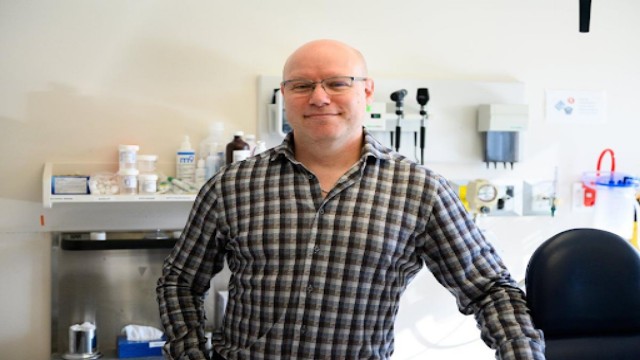
An Indian anesthetist and members of a surgical team attend to a patient suffering from mucormycosis in June 2021 in Kota, Rajasthan, India. Some fungal diseases in humans no longer respond to medicines, which increases the risk of severe illness and death as well disease spread, according to a new report. (Rebecca Conway/Getty Images)
The World Health Organization (WHO) has raised alarms over drug-resistant fungal infections, warning that some treatments are no longer effective. This growing resistance threatens public health, increasing the risk of severe illness, death, and the spread of infections.
On Tuesday, WHO released its first-ever report highlighting the global shortage of tests and treatments for fungal diseases. The report warns that common infections, such as Candida-induced oral and vaginal thrush, are becoming more resistant to available medications, making them harder to treat.
Why Fungal Infections Matter
Fungal infections are caused by different types of fungi, including yeasts, molds, and mushrooms. While many are harmless, some can lead to severe health complications. Infections like oral and vaginal thrush, lung infections, and even fungal diseases affecting the brain and spinal cord are becoming more common and difficult to treat.
Gerry Wright, a biochemistry professor at McMaster University, emphasizes that people with weakened immune systems are at higher risk. Cancer patients, organ transplant recipients, and individuals with autoimmune diseases are particularly vulnerable to fungal infections.
The most dangerous cases occur when fungi enter the bloodstream or deep tissues, leading to invasive infections. WHO classifies some of these infections as "critical priority" due to their high fatality rates, which can reach up to 88%.

A person holds a head of wheat afflicted with fusarium head blight, a fungal disease of crops. Antifungal agents sprayed on crops are often used to treat human infections that are becoming increasing resistant. (Heather Schlitz/Reuters)
Factors Driving the Increase
Advancements in medical treatments, particularly in cancer care, have led to an increase in immunocompromised individuals. This, in turn, has made fungal infections more prevalent.
Rebecca Shapiro, an expert in fungal diseases at the University of Guelph, points to another factor: the COVID-19 pandemic. Many severely ill COVID-19 patients developed secondary fungal infections, highlighting the growing threat.
A significant challenge in combating these infections is the lack of treatment options. While there are multiple classes of antibiotics for bacterial infections, there are only three primary classes of antifungal drugs. Misuse of these drugs, both in human medicine and agriculture, has contributed to resistance.
The Impact of Antifungal Resistance
Fungi like Aspergillus fumigatus, commonly found in the environment, are developing resistance due to widespread use of antifungals in both clinical settings and farming. The WHO has flagged this as a growing concern.
Doctors urge patients to complete their antifungal treatments and properly dispose of unused medications to prevent further resistance.
Canada’s Fungal Challenge
A particularly worrying fungal pathogen is Candida auris, which spreads in hospitals and long-term care homes. It can be deadly when it enters the bloodstream and often resists multiple antifungal treatments.
Since 2012, Canada has reported 65 cases of C. auris, with 46 occurring since 2019. Fortunately, all known cases in Canada have responded to at least one available treatment.
Experts also suggest climate change may be enabling certain fungi to survive at human body temperature, increasing the likelihood of infections.
The Urgent Need for New Treatments
WHO stresses the urgent need for new antifungal medications, particularly for children. However, drug development is slow—only four new antifungal drugs have been approved globally in the past decade. Of the nine currently in clinical trials, just three have reached the final phase, meaning limited advancements are expected in the near future.
Scientists like Wright and Shapiro are working on potential new treatments, but solutions remain distant. “This is a serious issue, and researchers are actively trying to solve it,” Wright said. “But breakthroughs don’t happen overnight.”















